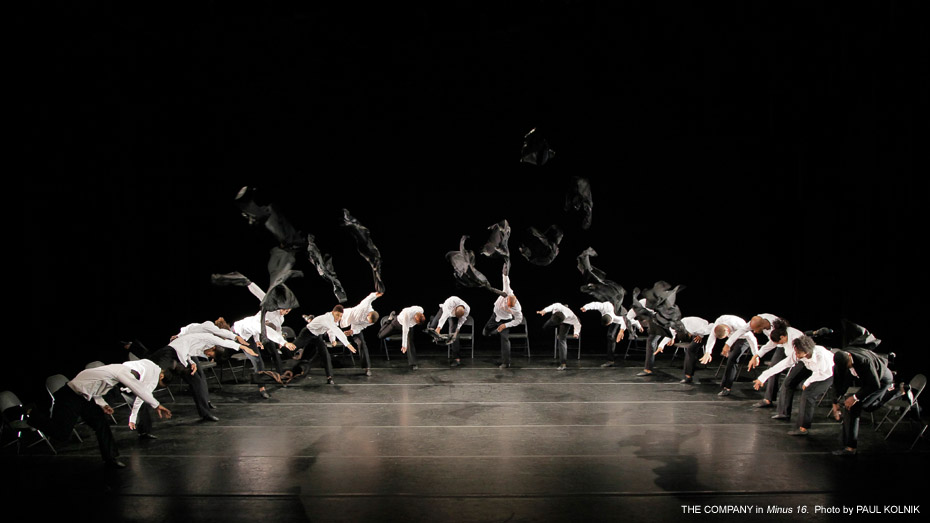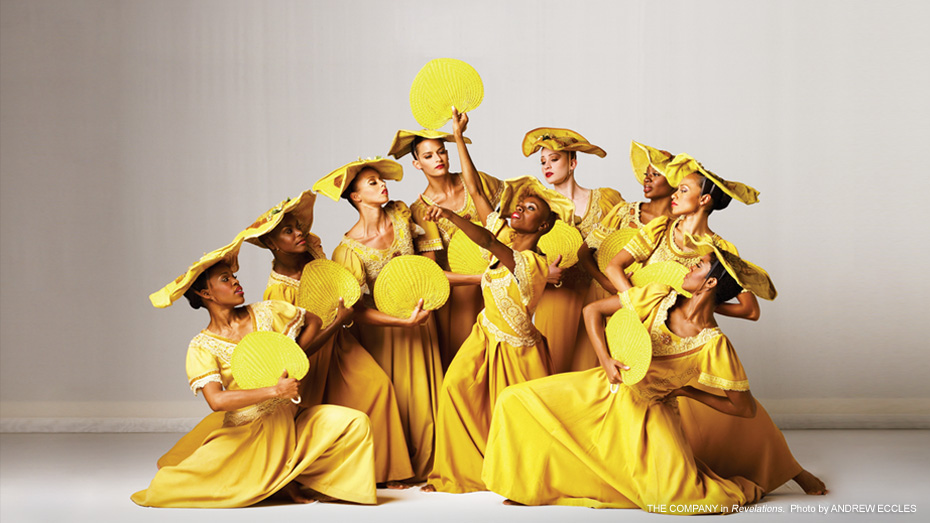In the history of Alvin Ailey American Dance Theater only three people have claimed the title of artistic director: Ailey himself, who founded the company in 1958; Judith Jamison, who danced under Ailey and took over upon his death in 1989; and, Robert Battle, who claimed the title less than one year ago upon the retirement of Jamison. Make no mistake, there has been some chatter in the larger dance community about how well Battle will perform in his new role, (and whether he should have that role at all, given that he has never officially danced with the company -- though he has set extensive choreography on the company and served as guest artist under Ailey himself.) But, if the company's performance at the International Spoleto Festival 2012 is any indication of how comfortable Battle is in his new role, I don't think dance audiences have a lot to worry about. If only three words could be used to describe the Saturday night performance at Charleston, SC's Gaillard auditorium, inspired, testosterone-heavy, and respectful are the one's Jasper would use. Battle started the evening off with an inspired performance of Minus 16, choreographed by Ohad Naharin. It's an odd concept and odd, but psychically satisfying, choreography. The piece begins with a lone dancer on stage, essentially just goofing off, or doodling around, dancing here and there in what appears to be an improvisational manner -- the house lights are still up and theatre doors open, and audience members think the guy is just there to entertain them while they wait on the show to start. The only thing is that, once the show starts, he doesn't leave. In fact, he is joined on stage by more people -- and they are all dressed just like him in dark dapper suits, white shirts, and hats. We soon discover that the performance started long before we thought it did. There are many interesting movements to the piece, a particularly moving segment involving a semi-circular cannon of large, African dance-inspired movements known as (“Echad Mi Yodea” or “Who Knows One?”). Minus 16 is made up of this and three other pieces of choreography by Naharin, who trained at and eventually became artistic director of Israel's Batsheva Dance Company.
But what was so inspiring about the performance was a surprising segment during which all 20 dancers descended into the audience and chose a dance partner to bring back onto the stage with them. Typically, we don't care for this kind of "audience participation" -- usually finding it not only annoying but a bit of a gyp, if you will, given the price of tickets these days. But this night, something at least fascinating, if not magical, happened. Of the 20 amateur dancers taken from the audience there were various levels of discomfort and bravado exhibited -- some people were clearly coerced into dancing, others were delighted to participate and boogied or twisted, and sometimes bumped and ground, their hearts out. But one elderly lady, dressed attractively in white slacks and a bright yellow sweater, took her place in the middle of the couples and, well, she owned the stage. Her movements were amateurish, but appropriate. Her body language was restrained, but open. What was so amazing was the almost euphoric comfort she seemed to feel on stage.
When the first act was over, audience members hit the lobby with huge smiles and intense cases of the warm fuzzies.
The second act of the night consisted of two testosterone-heavy examples of Battle's choreography, Takademe from 1999 and The Hunt from 2001. The overtly rhythmic Takademe, features a single male dancer, in this case, Yannick Lebrun, and is set to the music, Speaking in Tongues II, by Sheila Chandra. Rarely is choreography so intensely music driven -- the dance itself seemed almost secondary to the lyrics of the music. The Hunt is another male-centered piece featuring six men in samurai-style skirts reminiscent of Martha Graham costuming. Though neither of Battle's pieces were terribly challenging, they were both powerful and inordinately athletic.
The final piece of the night, as usual for a Charleston performance, was the classic from the Ailey rep, Revelations, and, also as usual, it was glorious. Divided into three movements, Revelations was first produced in 1960 as a tribute to the strength and tenacity of African-Americans' faith and an homage to Black history in the US. The dance features music from gospels and blues, and an amalgam of technically sophisticated choreography and a folksy brand of movement that makes the audience members churn in their seats. The final movement, Move, Members, Move with its 16 dancers clad in yellow costumes and hats and fans was just as breathtaking this weekend as it has been all three times this reviewer has witnessed it.
Welcome Robert Battle to Alvin Ailey Dance -- somehow we feel that the best is yet to come.



